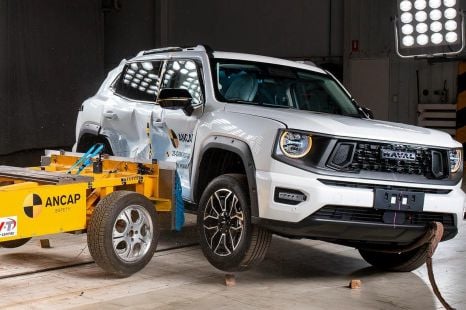

James Wong
Chinese newcomers score top safety marks
1 Day Ago
The 5008 is bound to impress you with its chic design and cutting-edge cockpit, but it's expensive against the competition and lacks an AWD option.
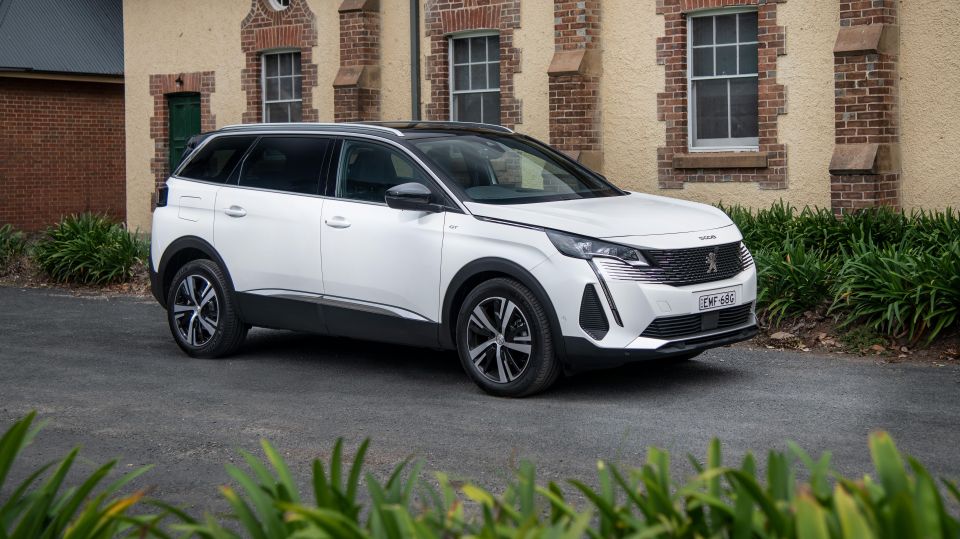
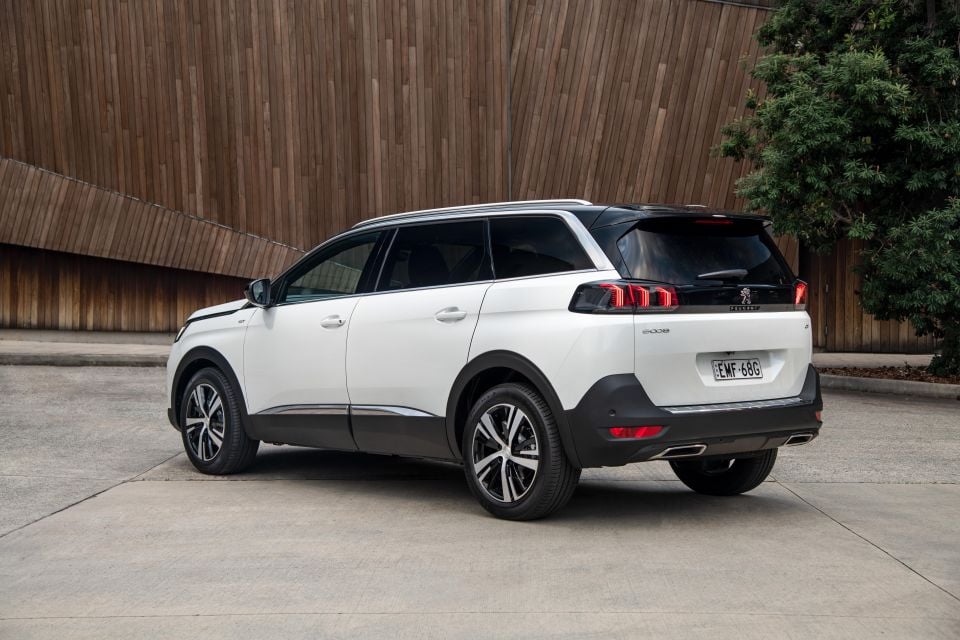

Senior Road Tester
New from
$51,990
excl. on-roads

Senior Road Tester
New from
$51,990
excl. on-roads


Senior Road Tester
New from
$51,990
excl. on-roads

Senior Road Tester
New from
$51,990
excl. on-roads
Quickly see how this car stacks up against its competition. Select any benchmark to see more details.
Where expert car reviews meet expert car buying – CarExpert gives you trusted advice, personalised service and real savings on your next new car.
Peugeot is once again having a real crack at the Australian market with updates to its entire SUV range, including its flagship 5008.
Stretching 194mm further in length than the five-seat 3008, the Peugeot 5008 is pretty much the same mechanically but with two extra seats.
Peugeot is hoping key updates to the 5008, including styling tweaks, new technology and additional safety features, will be enough to tempt buyers away from key rivals such as the Volkswagen Tiguan Allspace and Skoda Kodiaq.
Those exterior changes won’t be immediately obvious unless you’re looking at ‘old vs new’ pics – a result of its already avantgarde design when this current-generation 5008 launched back in 2017.

The biggest changes can be found up front, with a same striking frameless grille as the rest of the revamped Peugeot line-up, as well as vertical daytime-running lights – effectively replacing the fog lights from the previous iteration.
The headlight assembly has also been reshaped into a lower-profile unit. Collectively, these changes spruce up the 5008 with a more contemporary look
Down back the tweaks are far less obvious, with the only real update being the upgraded trademark ‘claw’ to full LED technology and a smoked glass housing.
The end result is still one of the most visually pleasing vehicles in the segment and one that’s refreshingly different from the rest of the pack. That’s before you step inside a cabin that looks and feels far more expensive than its sub-$60,000 price point might suggest.
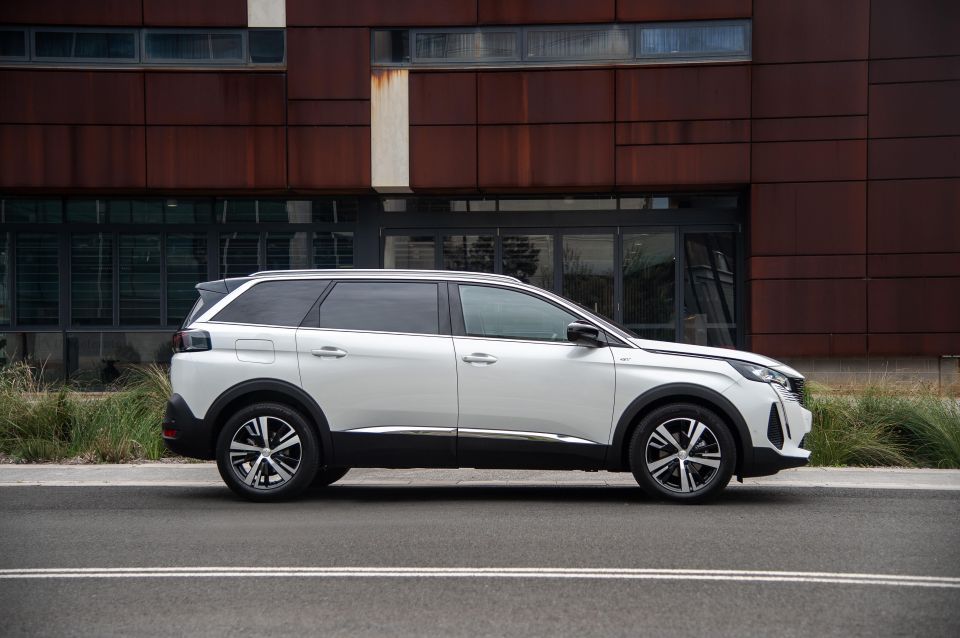
While Peugeot has kept its two-variant line-up for the 5008-range with diesel and petrol powertrains, it’s ditched the GT-Line badge in favour of just the ‘base’ GT Petrol and top-grade GT Diesel monikers.
The GT Petrol is still priced from $51,990 before on-road costs, while the GT Diesel commands an $8000 premium at $59,990 plus on-roads, which is $1000 more than its predecessor.
Options are similar to those on the 3008 range, with metallic paint ($690), premium paint ($1050), and a panoramic sunroof ($1990) available across the range.
Nappa leather upholstery with heated front seats and electric, massaging driver’s seat is offered on the GT Petrol for $3590, discounted to $2590 on the GT Diesel given it gets the electric driver’s seat as standard.
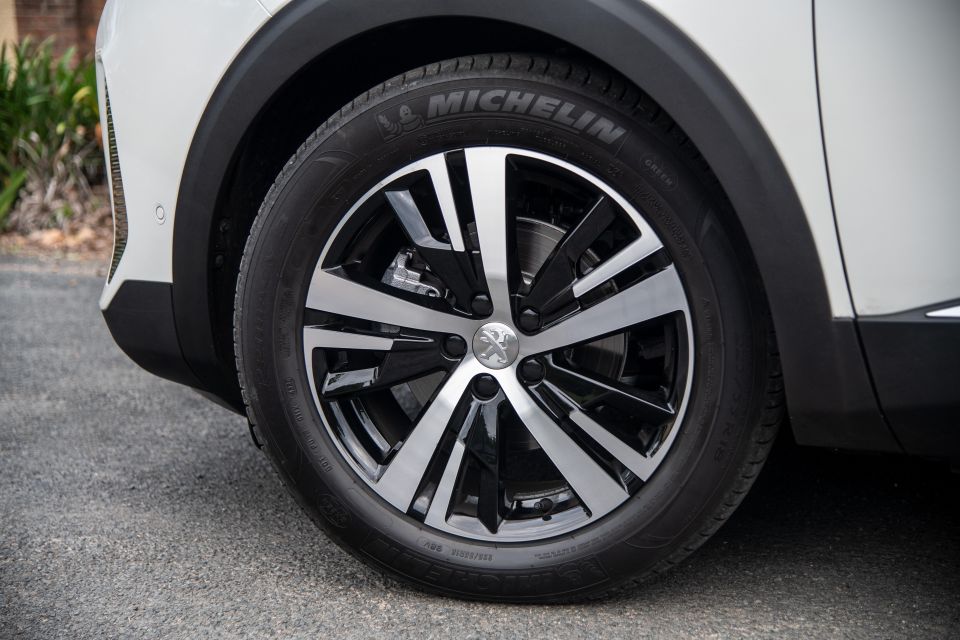
Buy your new car without the stress. It's fast, simple and completely free.

Great service from Travis and team, second time I have used this business would not hesitate to recommend them to anyone
Craig C.
Purchased a Ford Ranger in Sunshine Coast, QLD
CarExpert helped Craig save thousands on his Ford Ranger, now let us save you on your next new car.
Find a dealPeugeot has positioned the 5008 as semi-premium option in a bid to lure buyers away from seven-seat competitors such as the Tiguan Allspace, Skoda Kodiaq, and Mazda CX-9. While the price reflects that, it’s also generously equipped.
Standard fare includes front and rear parking sensors, wide-angle reversing and front cameras, semi-autonomous parking assist (parallel and perpendicular), keyless entry and push-button start, dual-zone climate control, as well as an auto-dimming and frameless rear-view mirror.
Additionally, there’s privacy glass, auto-dipping side mirrors, a kick-operated tailgate, DAB radio, wired Apple CarPlay and Android Auto, wireless phone charging, satellite navigation, integrated blinds for second-row windows, fold-down picnic tables in the second row, ambient lighting, and with Alcantara trim.
There’s also automatic full-LED headlights with fog light function and scrolling front indicators, automatic wipers and leather effect/Alcantara trim with copper top-stitch rounding out the highlights across both variants.
Moving up to the top-spec 5008 GT Diesel adds 19-inch ‘San Francisco’ matte Onyx Black diamond-cut alloy wheels, a 10-speaker Focal sound system, as well as an electrically-adjustable eight-way driver’s seat with heating, two-position memory and massage function.
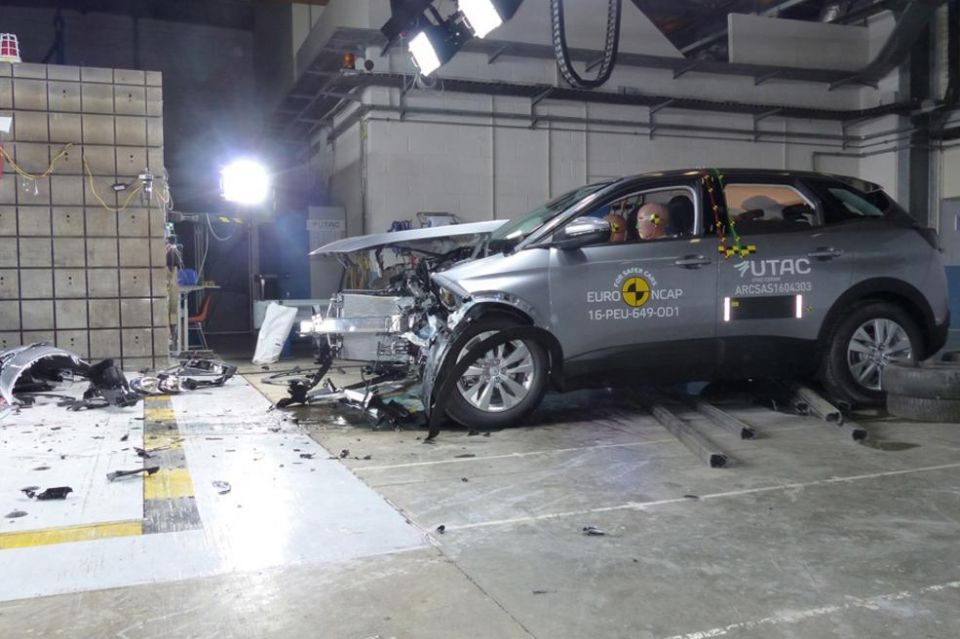
The 5008 wears a five-star ANCAP safety rating based on tests carried out by Euro NCAP on the smaller 3008 in 2016.
Category scores include 86 per cent for adult occupant protection, 85 per cent for child occupant protection, 67 per cent for pedestrian protection and 58 per cent for safety assist.
Like its smaller 3008 sibling, the latest-generation of its autonomous emergency braking can detect cyclists and pedestrians in low-light conditions and operates at speeds between 5km/h and 140km/h.
There’s also six airbags (front, side and curtain), adaptive cruise control with speed limiter, blind-spot monitoring, lane-keep assist, lane departure warning, distance warning alert, high-beam assist, driver attention alert, and speed sign recognition standard across the range.
Exclusive to the GT Diesel are lane positioning assist and adaptive cruise control with stop/go and automatic restart. However, the 5008 misses out on junction AEB and rear cross-traffic alert, features which are offered on rivals
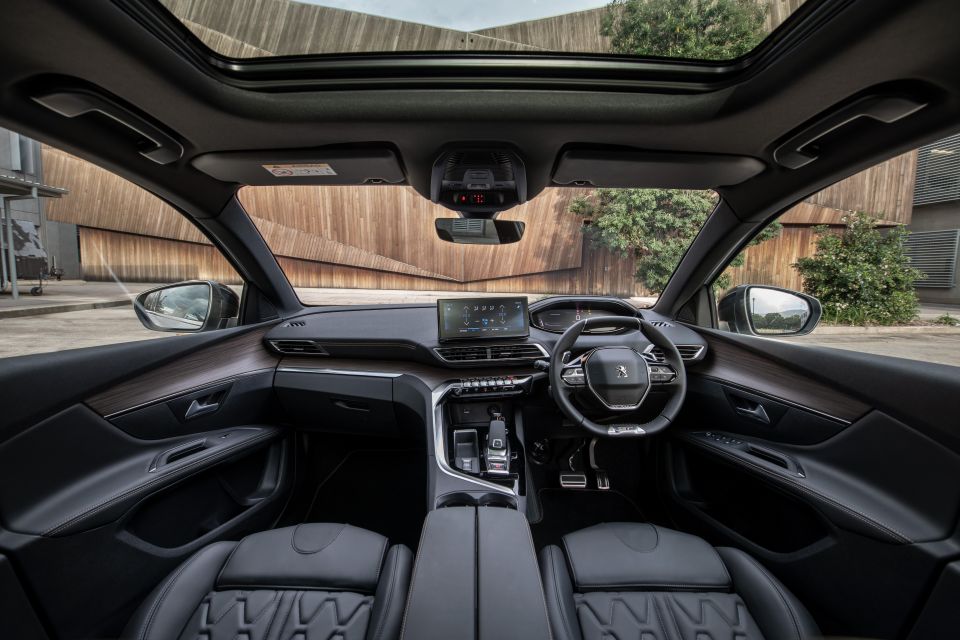
Our lone 5008 GT Petrol tester was fitted with options including the panoramic sunroof, full-grain nappa leather upholstery, an electric massaging driver’s seat, function premium paint.
Inside, our 5008 GT effectively mirrors the top-spec 3008 GT Sport we sampled at launch, so first impressions will be enough to convince more than a few buyers, with its aeronautical slant on cockpit design that includes a wonderfully sleek, yet tactile shift lever.
Buttons and dials have largely been minimised but for the beautifully styled row of ‘real’ metal toggle switches, positioned directly above.
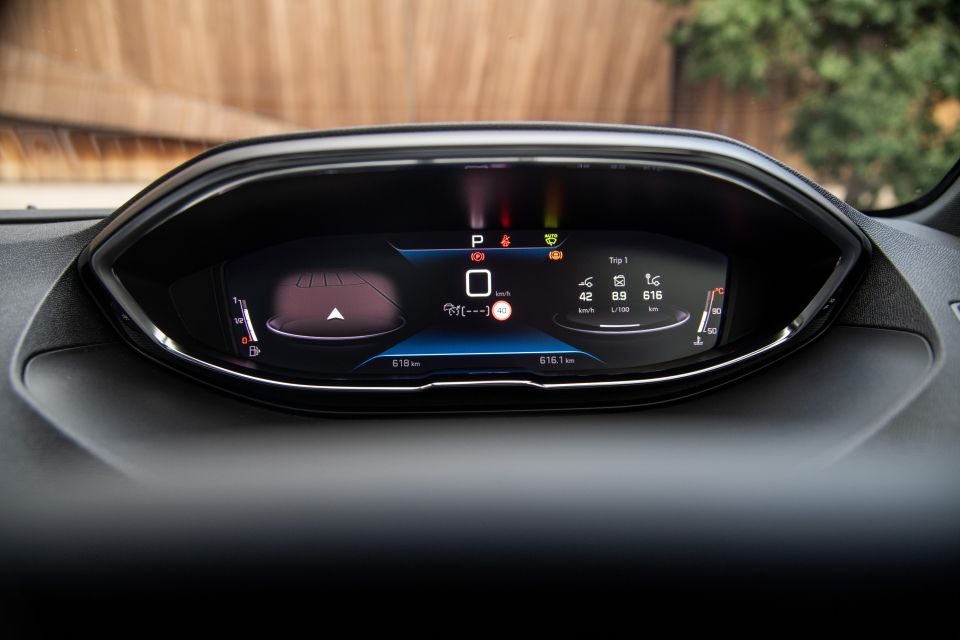
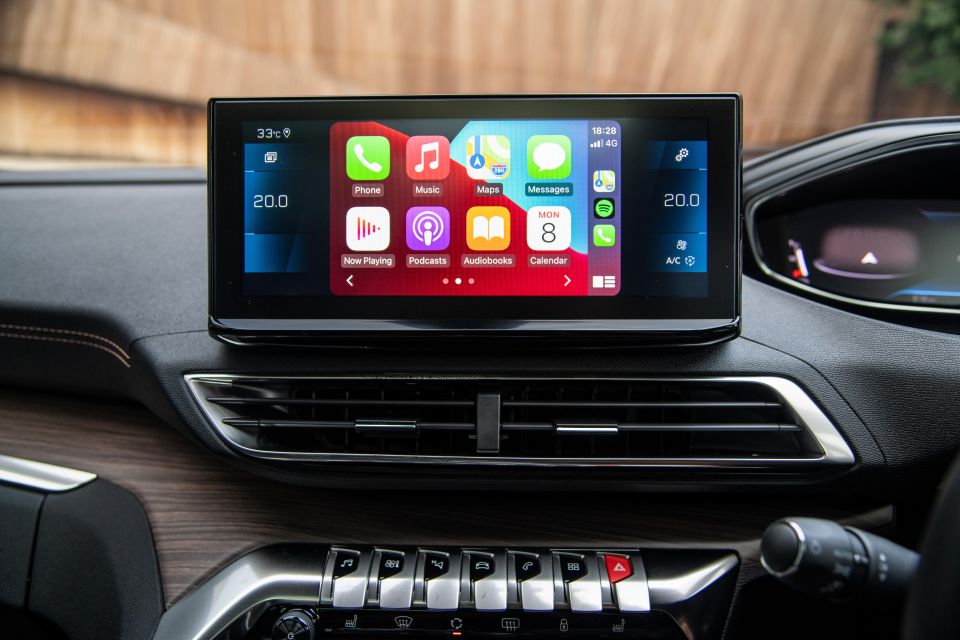
Front and centre is the new 10.0-inch touchscreen. Although it’s essentially fixed in a floating style, it looks decidedly premium. The only downside is the navigation map size is noticeably smaller than the screen itself.
However, the swathes of nappa leather alone make the 5008’s cabin an exceptionally nice place to be. Not only that, the cat-paw massage function actually feels remedial and is a welcome addition on a long drive.
One of its most interesting features is the diminutive, racing-style steering wheel in the same full-grain nappa leather. It’s flattened at both ends, and very easy to grasp, but it’s also positioned (by design) much lower than the average wheel – it’s practically in your lap.
If you’re not careful when setting up your preferred driving position it can partially impair the driver’s view of the digital instrument cluster, but its sporty feel and great design override the negatives.

Overall, it’s a first-class look and feel with plenty of soft-touch points and the right blend of metal and lime wood accents to lift this cabin space to the very top of its class.
The 12.3-inch digital instrument display isn’t as tall as those used in most rivals, but there’s an interesting 3D effect with improved contrast and deeper blacks, as well as being configurable with its screen layout.
Both the touchscreen and driver’s display weren’t immediately intuitive to me, but I’ll chalk that down to less time than we would have liked to properly explore the interface.
With its extra 194mm of length and third row of seating, there’s a stack of room in the 5008. With three rows in position there’s still 591 litres of space available. If you’re not using the two rearmost seats they can be easily removed, freeing up 1060 litres. Otherwise they fold dead flat for 952 litres of luggage space.
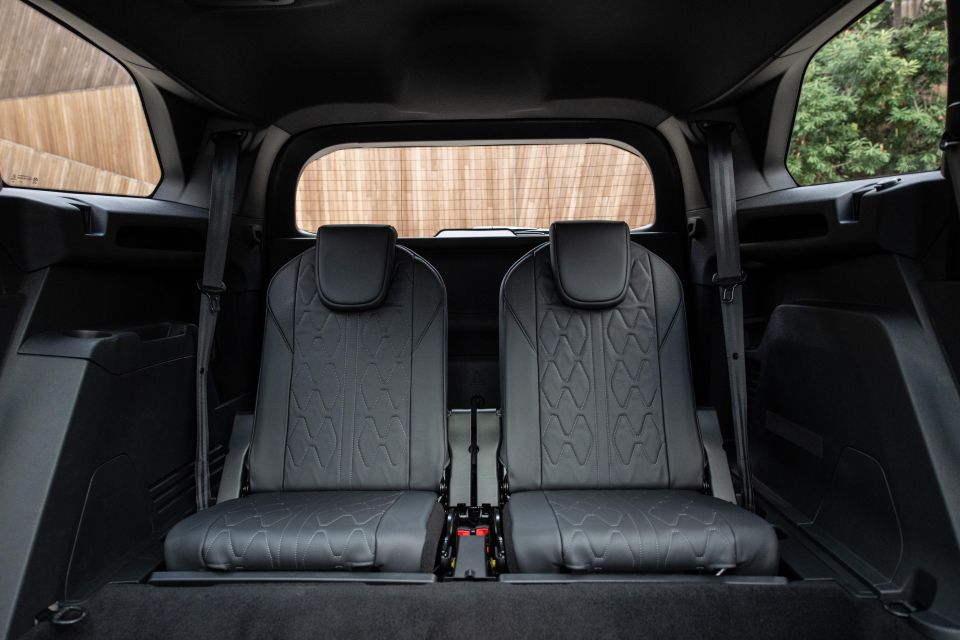
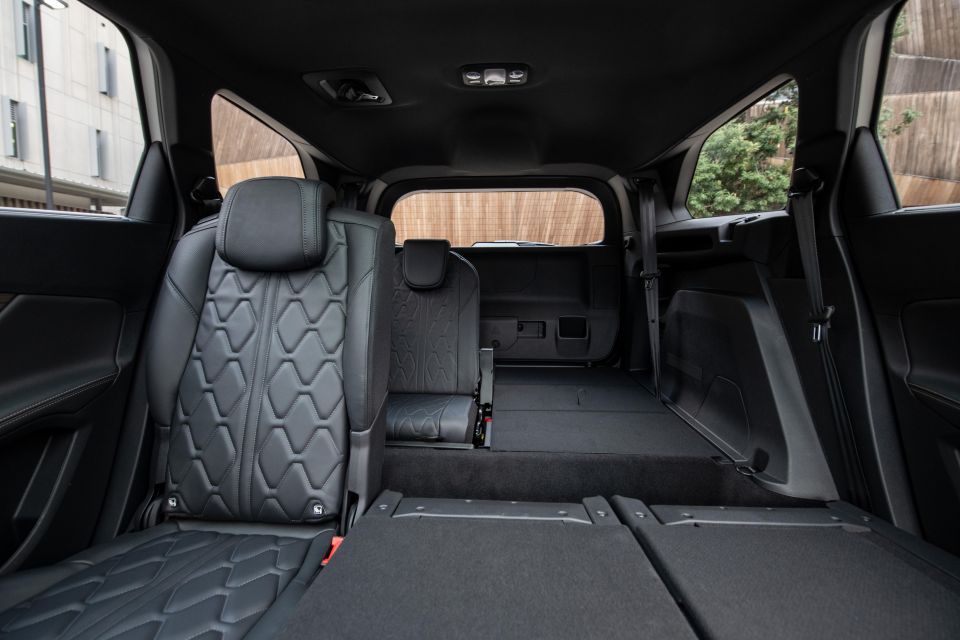
If you’re buying up big at Bunnings both the second and third rows fold flat, opening up a massive 2042 litres, or 2150 litres with all rear seats removed.
All three individual seats in the second row are on rails and when moved to their rear-most position, second-row legroom is almost limo-like.
Storage spaces throughout the cabin are also plentiful with bottle holders in all door pockets and one of the largest centre console bins in the class with convenient double doors – much like those in a Mercedes-Benz.
Rear-seat passengers also get a central armrest with cupholders, good ventilation and two USB ports, while third row passengers get cup holders and storage nooks.
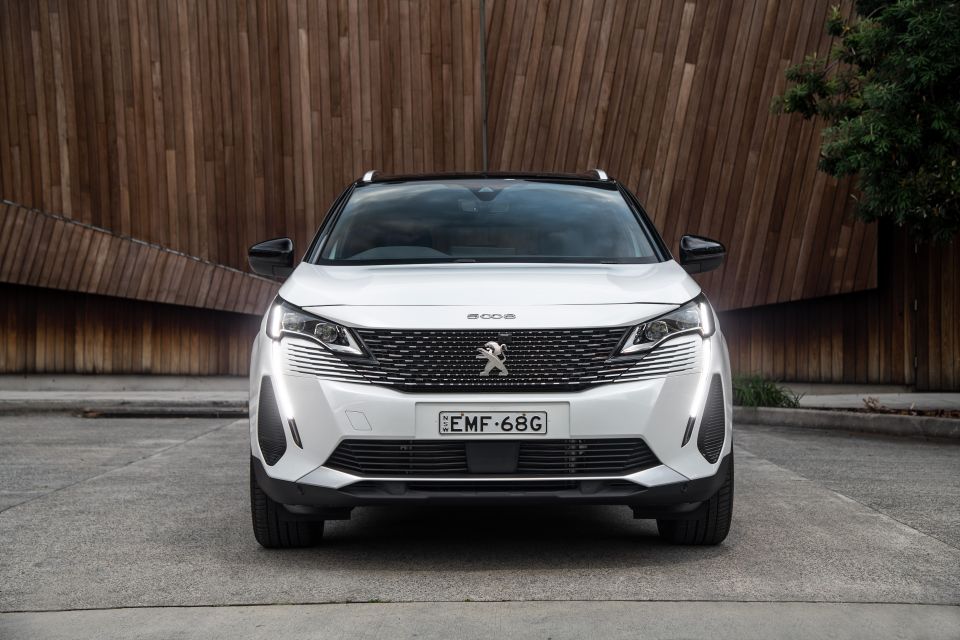
Despite its extra size and heft over the 3008, the Peugeot 5008 GT Petrol has to make do with the lower-spec 1.6-litre four-cylinder turbocharged petrol engine, making 121kW of power at 6000rpm and 240Nm of torque from 1400rpm. It’s sent to the front wheels via a six-speed automatic transmission.
That’s a bit less than the 133kW and 250Nm tune in the smaller 3008 GT Sport, which also gets a more sophisticated eight-speed auto which facilitates some of the driver assist features restricted to the 5008 GT Diesel.
The range-topping GT Diesel also uses the same 2.0-litre four-cylinder turbo-diesel as the 3008 GT Diesel, which develops a more versatile 131kW at 3750rpm and 400Nm from 2000rpm, sent to the front wheels through an eight-speed automatic gearbox.
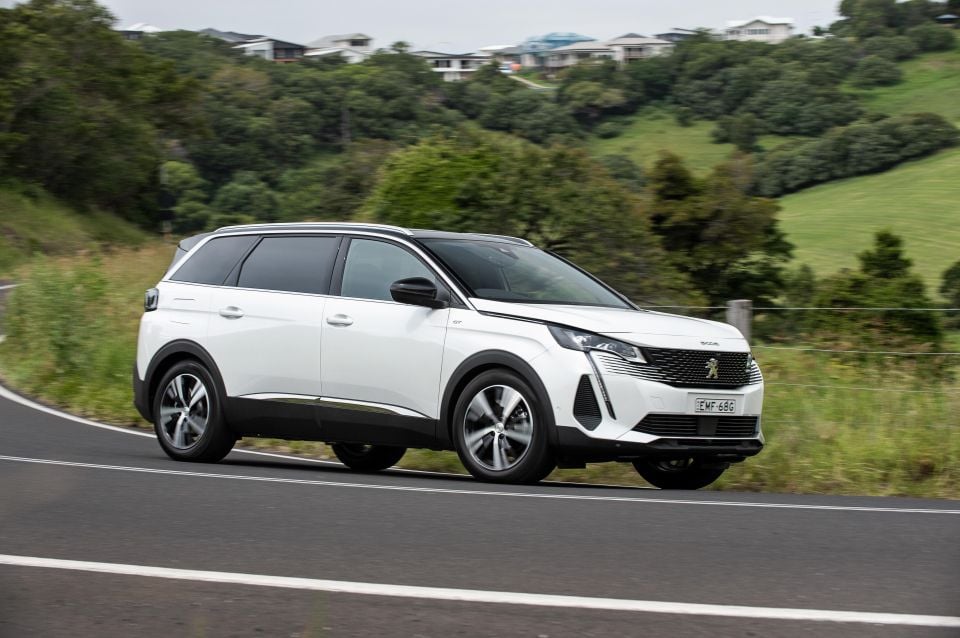
Like its 3008 sibling, the 5008 is refreshingly lightweight (1473kg), which means even with the drivetrain in our GT Petrol tester progress remains solid, particularly on our highway-biased test route.
Highway cruising at the maximum legal speed is effortless, even with the six-speed auto, but again this is a gearbox calibrated for top-gear travelling even at speeds under 60km/h.
There’s decent throttle response for peppy red-light getaways on the urban sections we experienced, and despite the extra bulk over the 3008 any power-to-weight disadvantages were barely evident.
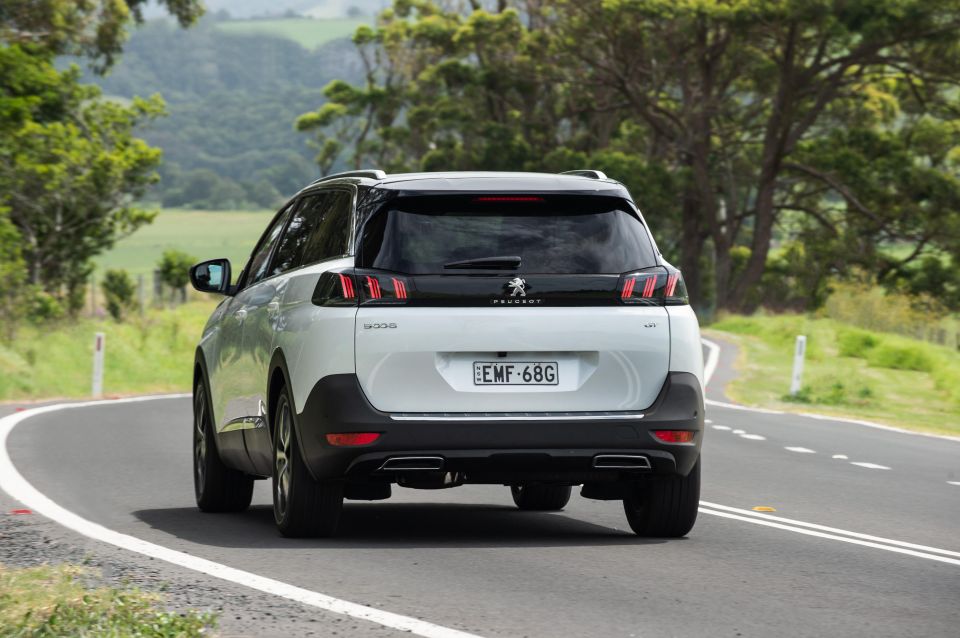
Where it tends to fall down is in the mid-range. Not a lot of punch here, so you’ll need to keep the throttle pinned during high-speed overtaking.
Where I might have thought the 5008’s longer wheelbase might have delivered even more ride comfort that the 3008 GT Petrol, the reality was the opposite.
There was slightly less compliance in the 5008’s suspension, so bumps and potholes were more pronounced in our particular test example shod with the same 18-inch wheels.
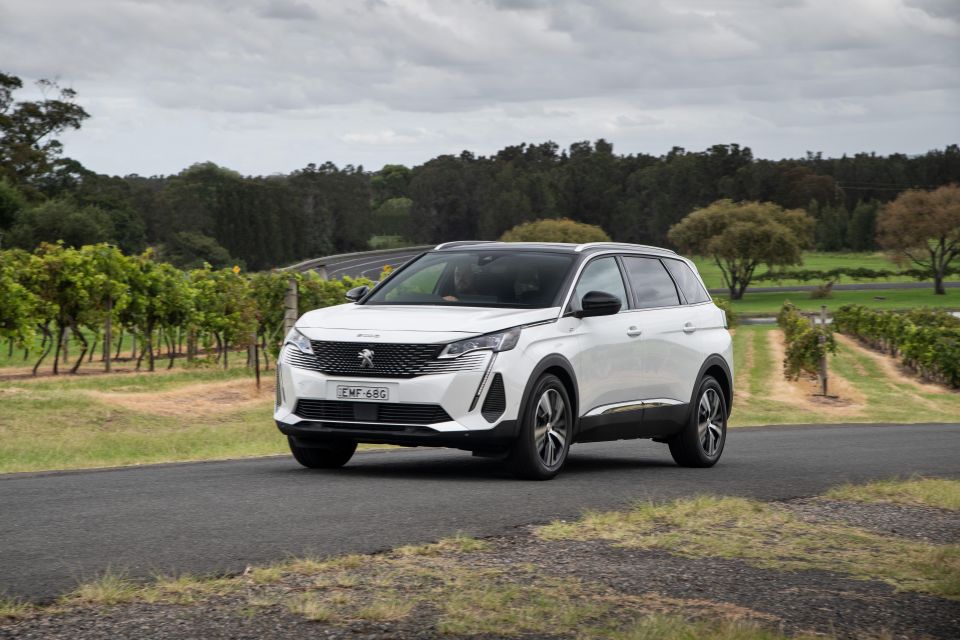
There’s more body roll when cornering, likely the combination of more weight and the taller roof line – meaning a higher centre of gravity perhaps, but it was immediately noticeable to this tester.
Don’t get me wrong, the 5008 still feels playfully agile on the road and it’s still more fun to drive than some of its rivals, just less so than the 3008.
The GT Diesel is likely the best package for the 5008, and while we look forward to getting it through the CarExpert garage, we recognise its premium price point over the petrol could will be a deal breaker for some budgets.
For those that may need to use their Peugeot 5008 to tow, the GT Petrol has a maximum tow capacity of 1350kg, and 1800kg for the GT Diesel.
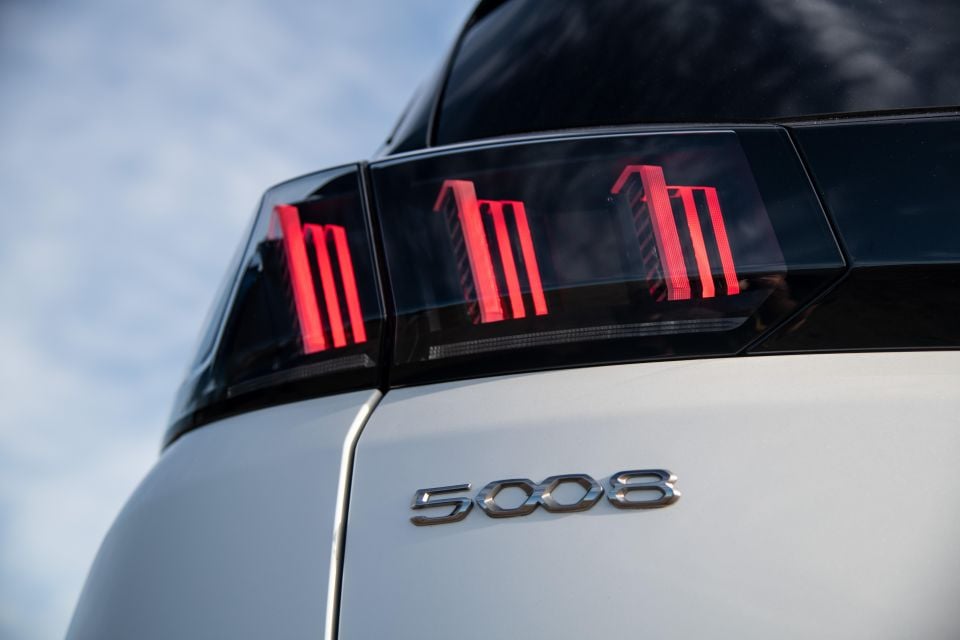
Where expert car reviews meet expert car buying – CarExpert gives you trusted advice, personalised service and real savings on your next new car.
The Peugeot 5008 comes with a five-year, unlimited-kilometre warranty with five years of roadside assist and capped-price servicing.
Service intervals for the 5008 range are 12 months or 20,000km (whichever comes first) with a total price of $2803 for the GT Petrol, and $2841 for the GT Diesel.
Thanks to the 5008’s small-displacement powertrains, fuel consumption claims are positively frugal across the entire range with 7.0L/100km for the GT Petrol (we saw 9.0L/100km), and 5.0L/100km for the GT Diesel.
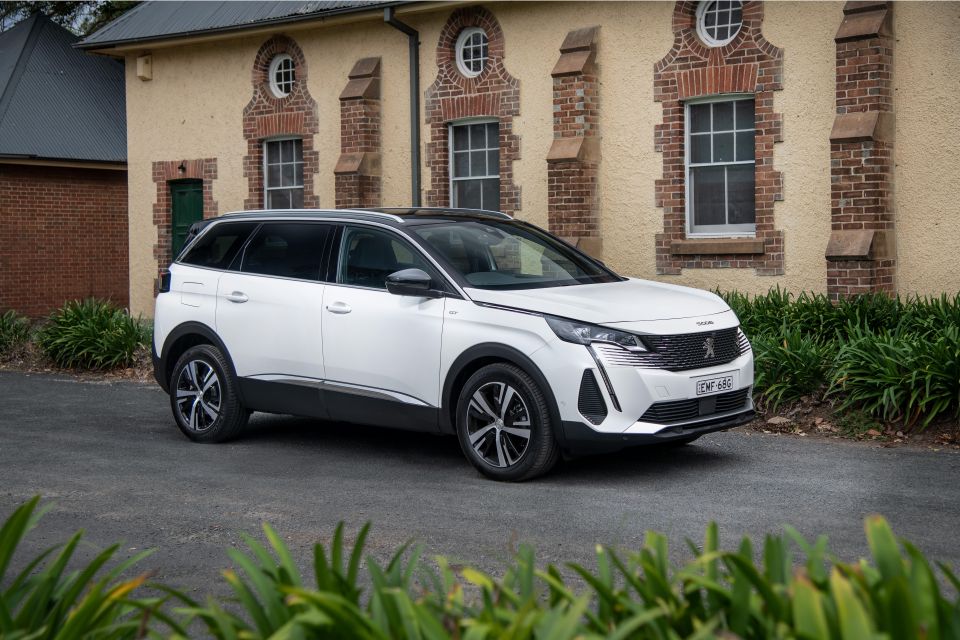
If you’re after some excitement in your family SUV then the Peugeot 5008 has got you well and truly covered – inside and out. It looks and feels more premium than most of its rivals – especially with the nappa leather option.
There’s also a ton of tech and creature comforts to keep you entertained, as well as clever interior packaging – more so than the Skoda Kodiaq. Add to that a decent ride, solid handling and agility, and the 5008 is worthy of more than a cursory glance.
However, there are cheaper, more powerful rivals, most of which are all-wheel drive, so the value proposition isn’t quite where we think it needs to be.
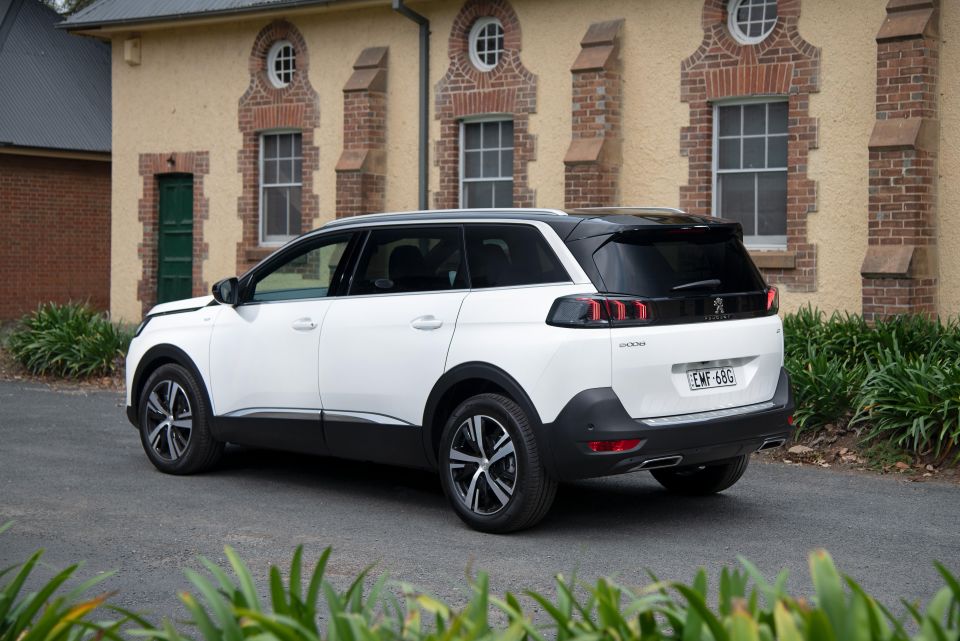
Click the images for the full gallery
Where expert car reviews meet expert car buying – CarExpert gives you trusted advice, personalised service and real savings on your next new car.
Anthony Crawford is a CarExpert co-founder and senior presenter with 20+years in automotive journalism and content creation.


James Wong
1 Day Ago


CarExpert.com.au
9 Days Ago
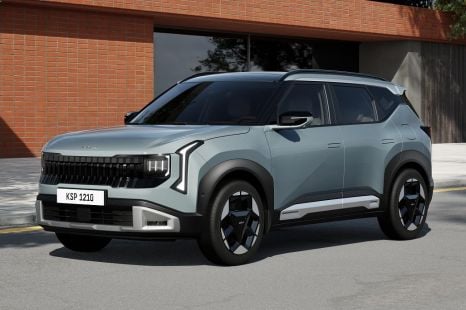

Max Davies
10 Days Ago


William Stopford
11 Days Ago


CarExpert.com.au
15 Days Ago


William Stopford
16 Days Ago